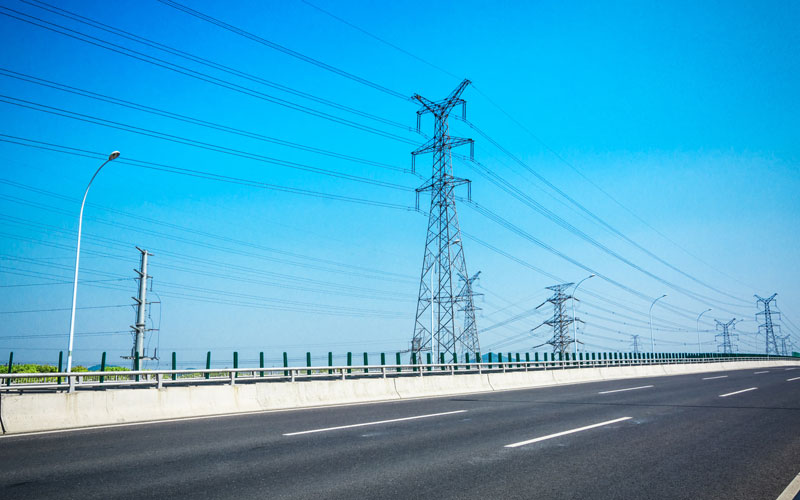Central Electricity Authority releases National Electricity Plan 2022-32. An overall financial investment of INR 33.60 lakh crore is expected to meet the power generation capacity addition requirements from 2022-2032.
May 31, 2023

The Central Electricity Authority (CEA) has notified the National Electricity Plan (NEP) for the period of 2022-32. The plan document includes a review of the last five years (2017-22), a detailed plan for the next five years (2022-27), and the prospective plan for the subsequent next five years (2027-32).
According to the NEP document, the projected All India peak electricity demand and electrical energy requirement is 277.2 GW and 1907.8 BU for the year 2026-27 and 366.4 GW and 2473.8 BU for the year 2031-32 as per the 20th Electric Power Survey (EPS) Demand projections. The Energy Requirement & Peak Demand are inclusive of the impact due to the increased adoption of electric vehicles, installation of solar rooftops, production of green hydrogen, Saubhagya scheme, etc.
The total fund requirement for generation capacity addition for the period 2022-2027 is estimated to be INR 14,54,188 crore and for the period 2027-2032 has been estimated to be INR 19,06,406 crore. The estimate of fund requirement for 2027-32 does not include advance action for the projects which may get commissioned after March 31, 2032.
Watch: RR Kabel | Solar Cables | Solar Plant | Renewable Energy
Based on generation planning studies for NEP 2022-27, the likely installed capacity for the year 2026-27 is 609,591 MW comprising 273,038 MW of conventional capacity (coal-235,133MW, gas–24,824MW, nuclear-13,080MW) and 336,553 MW of renewable-based capacity (large hydro-52,446 MW, solar-185,566 MW wind-72,895 MW, small hydro-5,200 MW, biomass-13,000MW, pump storage plants (PSP projects) -7446MW) along with Battery Energy Storage System (BESS) capacity of 8,680MW/34,720 MWh.
The likely installed capacity for the year 2031-32 is estimated to be 900,422 MW comprising 304,147 MW of conventional capacity (coal-259,643 MW, gas–24,824MW, nuclear-19,680MW) and 596,275MW of renewable-based capacity (large hydro-62,178 MW, solar-364,566MW, wind-121,895MW, small hydro-5450MW, biomass-15,500 MW, PSP-26,686MW; excluding 5856 MW of likely hydro-based imports) along with BESS capacity of 47,244MW/236,220MWh.
The projection of total capacity addition is in line with the target of the country to achieve a non-fossil-based installed capacity of around 500 GW by the year 2029-30.
NEP envisages that the share of non-fossil-based capacity is likely to increase to 57.4% by the end of 2026-27 and may likely to further increase to 68.4% by the end of 2031-32 from around 42.5% as of April 2023.
The average PLF of the total Installed coal capacity of 235.1 GW is likely to be about 58.4% in 2026-27 and that of 259.6 GW of coal-based capacity is likely to be about 58.7% in 2031-32.
Also Read: NHPC & VUCL, Nepal Sign MoU for Phukot Karnali 480 MW Hydro Electric Project in Nepal
As per the National Electricity Plan projections, the energy storage capacity of 16.13 GW/82.37 GWh with PSP-based storage of 7.45GW capacity and 47.65 GWh storage, and BESS-based storage of 8.68 GW/ 34.72 GWh is required by the year 2026-27. The storage capacity requirement increases to 73.93 GW (26.69 GW PSP and 47.24 GW BESS) with storage of 411.4 GWh (175.18 GWh from PSP and 236.22 GWh from BESS) by the year 2031-32.
The domestic coal requirement has been estimated to be 866.4 MT for the year 2026-27 and 1025.8 MT for the year 2031-32 and an estimated requirement of 28.9 MT of coal imports for the plants designed to run on imported coal. The average emission factor is expected to reduce to 0.548 kg CO2/kWh net in the year 2026-27 and to 0.430 kg CO2/kWh net by the end of 2031-32.




